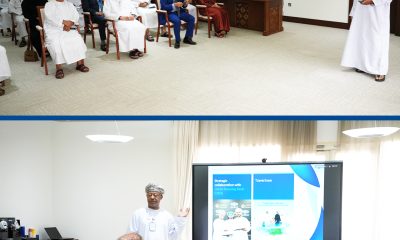Economy
Goldman Asks What If Lebanon Is Forced to Restructure Debt

Goldman Sachs Group Inc. still sees an imminent debt restructuring in Lebanon as unlikely but is already turning its attention to how much investors could recover as one of the world’s most indebted countries teeters on the brink of financial crisis.
Under Goldman’s base scenario, foreign investors would recover 35 cents on the dollar, Farouk Soussa, an economist at Goldman Sachs, said in a report. But he said any debt overhaul would put the country’s banks first, meaning “the actual recovery value” would be significantly different to contain damage. Local lenders are among the biggest holders of Lebanon’s sovereign debt.
Lebanon’s sovereign debt risk surged 280 basis points over the past year to 800, making it the world’s third-worst performing among credit default swaps tracked by Bloomberg.
In his report, Soussa said the country is unlikely to make its debt sustainable through fiscal adjustment because that would require a sharp decline in interest rates or substantial economic growth. While possible, both “are largely outside the control of policymakers, and are highly dependent on regional economic and political developments,” he wrote.
Some of Lebanon’s key challenges:
- Economic growth averaged about 1.6 percent between 2011 and 2018, IMF data show, compared with 7 percent in the preceding seven years.
- Political disputes between a pro-Saudi bloc and the Iranian-backed Hezbollah have prevented the formation of a government since May.
- The temporary resignation of Prime Minister Saad al-Hariri in 2017, widely blamed on Saudi Arabia, has further undermined investor confidence in the economy.
- Deposit growth, key for local banks to buy government debt, has slowed.
Starting in 2016, commercial lenders have been encouraged to draw new deposits and park their liquid foreign assets at the central bank.
The “symbiotic” relationship between authorities and the banks complicates the math of easing one of the world’s biggest debt burdens, Soussa said in the report dated Jan. 4.
“Any possible restructuring is likely to be designed in such a way as to minimize the fallout for the local banks,” Soussa said.
While Lebanon has long teetered on the brink of a full-blown crisis, it’s never defaulted despite a 15-year civil war, numerous flare-ups with Israel and a devastating war next door in Syria that cost its economy an estimated $18 billion.
Lebanon’s financial system probably has enough foreign-currency liquidity to fund deficits “for the next couple of years, all else equal,” Soussa said.
Foreign investors, however, aren’t discounting the possibility that this time may be different. Caretaker Finance Minister Ali Hassan Khalil admitted as much last month when he warned that “the crisis today has started to transform into a financial crisis from an economic crisis.”
Goldman Sachs puts the exposure of local lenders to the government’s local debt and Eurobonds at some 55 trillion Lebanese pounds ($36.5 billion) almost double the capital base of the whole banking system.
“The most important factor that will determine the outcome of any debt restructuring is the relationship between the sovereign and the banking sector,” Soussa said.
-

 Alamaliktistaad Magazines2 months ago
Alamaliktistaad Magazines2 months agoAlam Al Iktisaad – September 2025 Edition
-

 Magazines2 months ago
Magazines2 months agoOER – September 2025 Issue
-

 News2 months ago
News2 months agoKitchenomiKs Secures Investment of US$3.2M Led by Jasoor Ventures
-

 News2 months ago
News2 months agoOman Inaugurates ‘Hadatha’ – Its All-New Cybersecurity Center
-

 Banking & Finance2 months ago
Banking & Finance2 months agoOman Arab Bank Highlights Its Ongoing Strategic Initiatives and Future Plans
-

 News2 months ago
News2 months agoIEA Expects Global Oil Market to Remain Oversupplied in 2026
-

 Energy2 months ago
Energy2 months agoWLGA Middle East LPG Summit & Expo 2025 to be held at OCEC on November 10 and 11
-

 Real Estate2 months ago
Real Estate2 months agoAl Mouj Muscat Unveils Azura Beach Residences Phase 2: A New Chapter in Waterfront Living































You must be logged in to post a comment Login